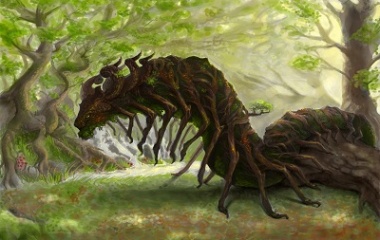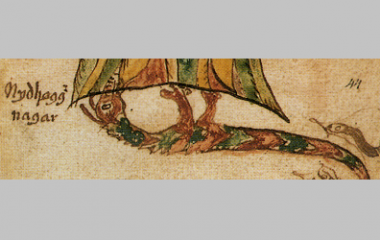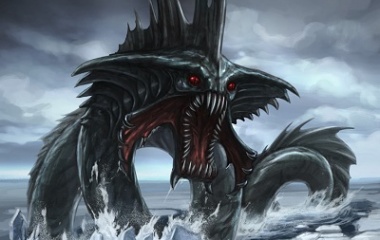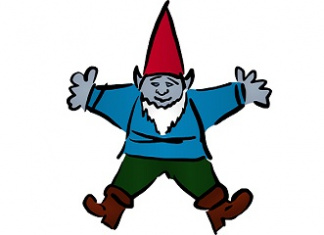Who is Nidhogg?
Nidhogg (Norse Níðhöggr) is a ferocious dragon who gnaws at the roots of Yggdrasil, the tree which supports the nine worlds of Norse mythology. This power-hungry monster is sometimes referred to as “the Malice Striker,” an appropriate name given that he rules over dark criminals and is bent on destroying peace and virtue.
Characteristics
Physical Description
Nidhogg is a tremendous dragon. His body is covered in bright scales, and horns erupt from his head. A pair of forelegs, complete with massive claws, help him to rip at the roots of Yggdrasil, but he has no back legs, only a serpentine tail. Beneath his bat-like wings, he carries the corpses of criminals.
His mammoth body can be found twisting through the roots of Yggdrasil, especially around Niflheimr, the cold world from which all the rivers of Midgard spring. Occasionally, he might slither into Hel to visit the dark goddess who some people consider his master.
Role
Balance is extremely important in Norse mythology, and while Nidhogg does represent a ghastly force, he is still important to supporting the balance of Yggdrasil. A great eagle, who represents wisdom and virtue, perches in the uppermost branches of the tree, while Nidhogg, representing chaos and evil, lurks in its roots. The constant tension between the eagle and the dragon is fueled by Ratatoskr, a squirrel who runs up and down the tree ferrying insults between the two enemies. This tension may seem undesirable, but it actually promotes a cycle of growth in the tree of life. After the eagle and the dragon spend the day destroying Yggdrasil in their frenzy to attack each other, the tree is bathed in water from the wells of Urd, which promotes healing and new growth.
In addition to bringing balance to Yggdrasil, the monster also figures in the punishment of criminals. He rules over the dark shores of Nadastrond, to which the corpses of murderers, adulterers, and oath-breakers are banished. A terrifying hall, with walls woven from serpents and a ceiling that drips venom, waits for these criminals, and inside the hall, the dragon chews on their bodies.
Finally, the dreaded dragon has a role to play in Ragnarok, the day when the giants will attack the gods and destroy most of their world. Ragnarok will begin when the dragon finally manages to chew through the roots of Yggdrasil, causing the tree to yellow and the worlds it supports to plunge into a three-year winter. At the end of this frigid and chaotic period, he will fly up from the underworld, carrying dead criminals and leading the giants on an attack against the gods. Ultimately, the he will survive this battle and become the force of evil which balances good in the post-Ragnarok world.
Cultural Representation
Literature
Nidhogg appears in both of the early authoritative texts about Norse mythology: the Poetic Edda and the Prose Edda of the thirteenth century.
The poem Grímnismál in the Poetic Edda introduces Nidhogg by saying,
“Ratatosks is the squirrel who there shall run / On the ash-tree Yggdrasil; / From above the words of the eagle he bears, / And tells them to Nithhogg beneath.”
A second poem, Völuspá describes the realm of Nadastrond, which Nidhogg rules:
A hall I saw, / far from the sun, / On Nastrond it stands, / and the doors face north, / Venom drops / through the smoke-vent down, / For around the walls / do serpents wind. / I there saw wading / through rivers wild / treacherous men / and murderers too, / And workers of ill / with the wives of men; / There Nithhogg sucked / the blood of the slain, / And the wolf tore men; / would you know yet more?
Although Nidhogg is featured in the Poetic Edda and the Prose Edda, which are pillars of our modern knowledge of Norse mythology, he is not mentioned elsewhere in any other ancient texts.
Visual Arts
Like many of the other fantastic characters from Norse mythology, Nidhogg has earned a special place in the hearts of gamers. He appears in both video games and role playing games, including World of Warcraft and one indie game named Nidhogg.











You thought Dragons were peaceful?
I was surprised to read that this dragon represents chaos and evil as I’ve always thought they are peaceful creatures. My brother is into this mythological stuff, and he loved dragons! He has a birthday soon, so I think I will et him something connected with these myths. Thanks for the information!